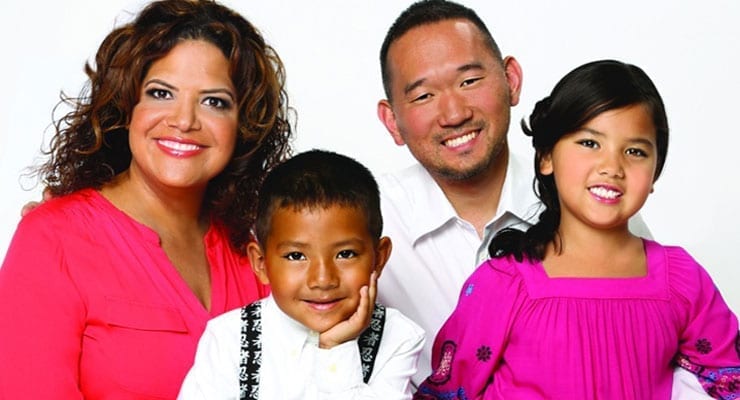My family loves celebrating “firsts.” First anything. First smile, first word, first birthday, first haircut – you get the idea. But on my daughter’s first day of school in her dual language
(English/Korean) classroom, we got our first “are you her mother?” question.
As a biracial mom raising multicultural children faced with questions like this, I have to remind myself that most people are just curious. My first inclination is to answer, “who do you think I am?” But I don’t, because I have been trained.
Not unlike a swimmer doing laps in the pool, as a biracial adult I have been training my whole life to answer questions like these. My training came from having to answer questions like “what are you?” “are you sure you’re black” “Can I touch your hair”
Stroke, stroke, breathe.
I reply that I am mixed, Mexican and Black. Stroke. It’s genetics: I am half my mother half my father. Stroke. And no you can’t touch my hair. Breathe.
I don’t take offense. I know my children have it better than when my parents were raising me, years ago. They married just a few years after the Supreme Court in 1967 overturned the race-based restrictions on marriage with the Loving vs. Virginia case.
Today, families are more diverse than ever and the law is catching up. In fact, in 2000 the U.S. Census Bureau allowed citizens to identify as more than one race. I no longer had to choose which “one” of my ethnicities I was going to choose to mark off. Moreover, I no longer had to fit in a box.
According to a Pew Research report in 2010, marriages between spouses of a different race or ethnicity from each other increased to 15.1 percent. Mixed-race children are one of the fastest growing segments of the U.S. population, as well as an increase in transracial and international adoptions.
So my training continues. This time, it’s not only how do I help my multicultural children be well adjusted and celebrate all that they are, it’s how do I do that plus have them appreciate the various cultures that surround them. I choose to be proactive and sensitive to not only components of their heritage but of others. As a mom, my job is to help raise mini global citizens that will inherit this multicultural world of ours.
We read multicultural books that teach lessons of embracingwho they are and how everyone is unique and beautiful. Books like Hairs/Pelitos by Sandra Cisñeros, “I am Mixed” by Garcelle Beauvais & Sebastian A. Jones and “Chocolate Me” by Taye Diggs and Shane W. Evans.
We talk to teachers about the books they keep in the classroom and purchase books that the teachers keep books in the classroom that feature multicultural, multiethnic and mixed-race characters.
We chose a school that celebrates cultural diversity and has school wide celebrations like “international day”. It’s exciting to learn about the customs, religions and languages of others.
We attend cultural events that happen in our city like the largestAmerican Indian Arts Market at our local museum, joining in on a Korean dance class or by participating with organizations that support multiracial families.
I know that the world is not color blind and my children may struggle being multiracial at times, but my goal is to help them find the beauty in themselves and in others.
I train my children to find equality in everyone. To be proud Americans that don’t have to fit into one box. They don’t have to choose one or the others. They can be proud of their Black, Latino and Asian roots.They can speak English, Spanish and Korean.
In response to the woman who asked if I was the mother on the first day of school I proudly replied, “si, soy la mamá.”
I’m sure that was a first.





